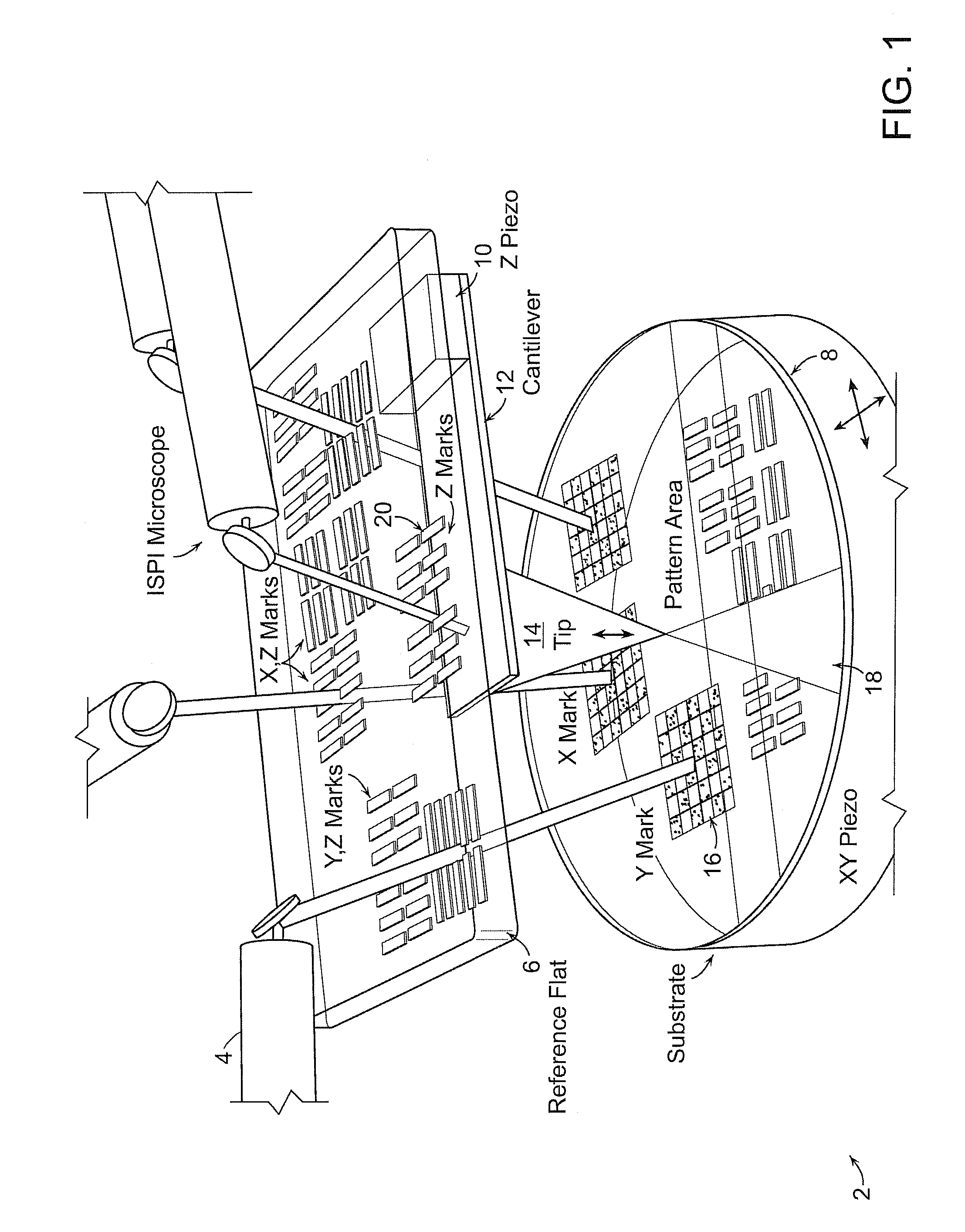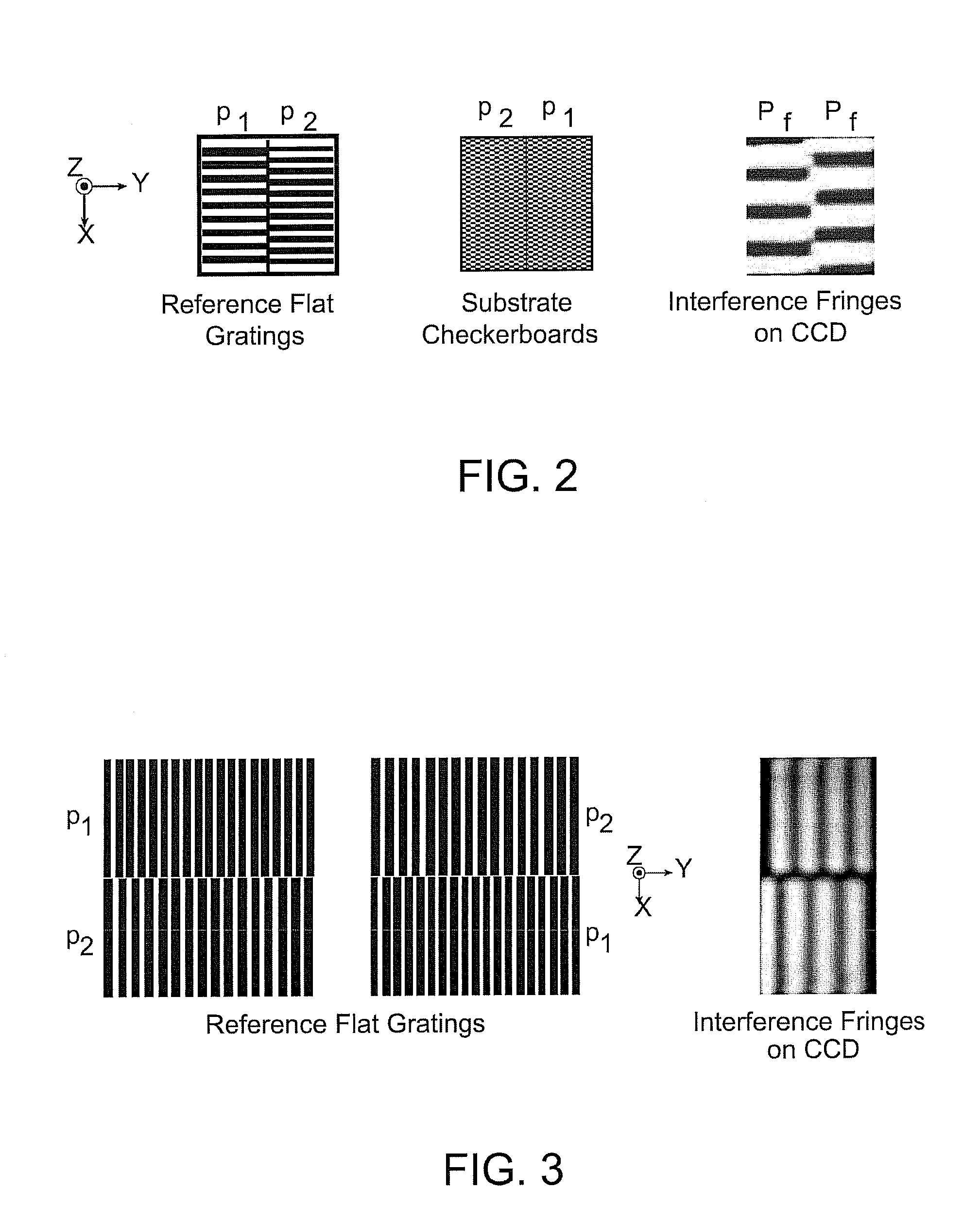Nanometer-precision tip-to-substrate control and pattern registration for scanning-probe lithography
a scanning probe and pattern registration technology, applied in the field of interferometricspatial phase imaging, can solve problems such as degrading the quality of scanned images
- Summary
- Abstract
- Description
- Claims
- Application Information
AI Technical Summary
Benefits of technology
Problems solved by technology
Method used
Image
Examples
Embodiment Construction
[0017]The invention relates to a technique for direct, nanometer-precision referencing of a scanning probe tip to a substrate, using Interferometric-Spatial-Phase Imaging (ISPI), which is being applied to template alignment and gap control.
[0018]In accordance with an exemplary embodiment of the invention, a probe tip 14 is attached to a transparent, planar support structure 6, such as a fused silica plate, referred to herein as a reference flat, containing grating patterns. Checkerboard marks 16 form complementary patterns on the substrate 8, as illustrated in FIG. 1. The marks 16 are illuminated with spatially-coherent light at an oblique angle and interference patterns encoding position are detected with darkfield microscopes at a similar angle produced by ISPI microscopes 4. The measurements are used to control the lateral position of the tip 14 with respect to the substrate 8.
[0019]During lithography, the substrate 8 is scanned underneath the tip in X and Y directions, while the...
PUM
 Login to View More
Login to View More Abstract
Description
Claims
Application Information
 Login to View More
Login to View More - R&D
- Intellectual Property
- Life Sciences
- Materials
- Tech Scout
- Unparalleled Data Quality
- Higher Quality Content
- 60% Fewer Hallucinations
Browse by: Latest US Patents, China's latest patents, Technical Efficacy Thesaurus, Application Domain, Technology Topic, Popular Technical Reports.
© 2025 PatSnap. All rights reserved.Legal|Privacy policy|Modern Slavery Act Transparency Statement|Sitemap|About US| Contact US: help@patsnap.com



